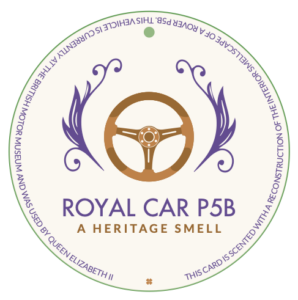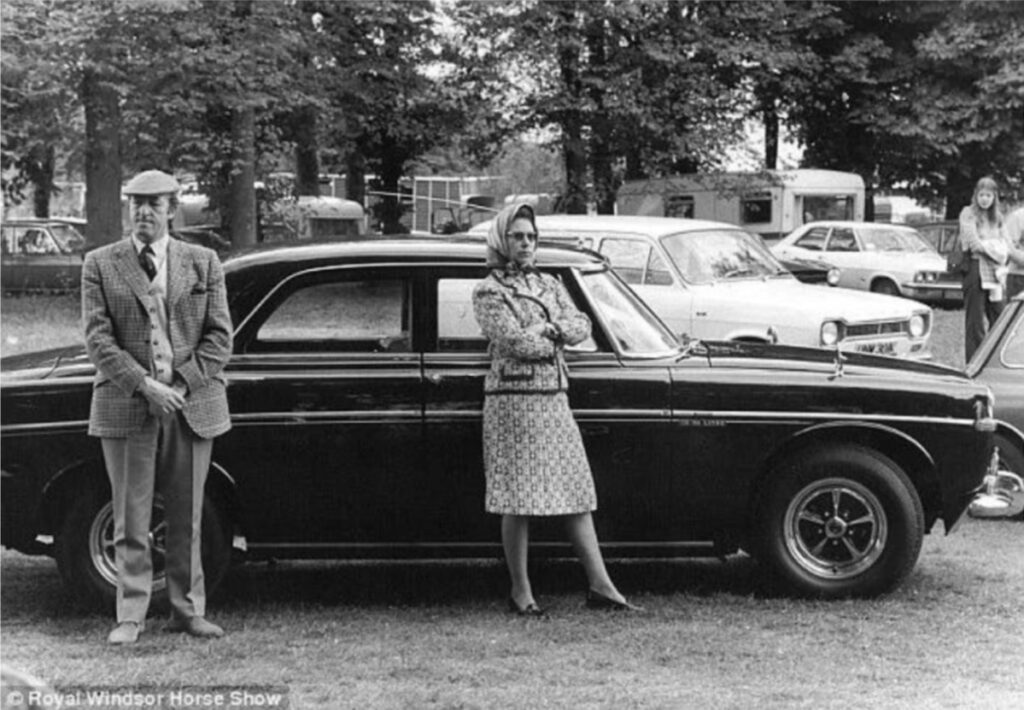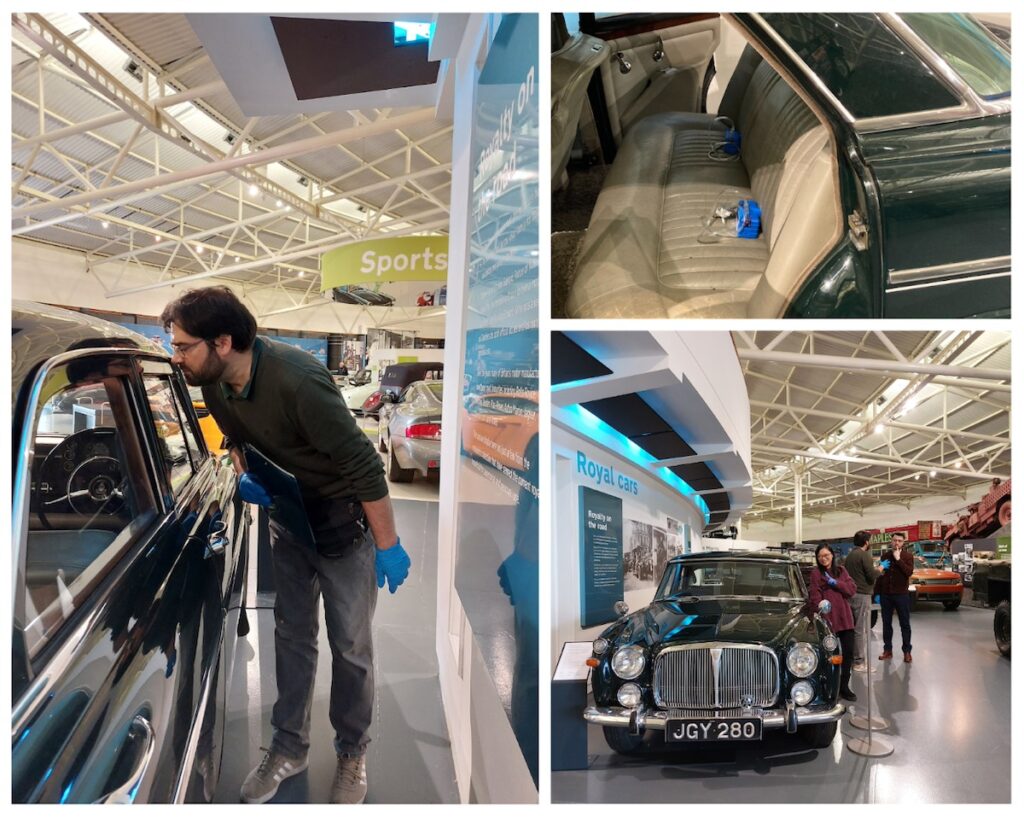
One of the aims of the Odeuropa project was to develop best practice in olfactory digitisation, particularly around culturally significant smells. This task was led by the UCL Institute for Sustainable Heritage.
To this end, we worked on the preservation of the smell of the interior of a historic vehicle once owned by Queen Elizabeth II – the Rover P5B. The car is on display at the British Motor Museum, in Gaydon.
This car was Queen Elizabeth II’s personal car, which she often drove around herself for non-estate occasions. It was built in 1973 and was sent straight to the Royal Mews from the factory in 1974. The car was fitted with a radio/telephone and a discreet blue light on the windscreen, which is a feature that many state cars have, to indicate who is in the vehicle at night. Regarding the interior of the car, there were specific requests made by the Queen, which included a special “thick curly pile carpet” which covered the standard carpet (source: British Motor Museum).


The first step into this research task was to assess the cultural significance of the smell of the vehicle by documenting the value of this particular smellscape, as well as the smell of car interiors in general, for groups, communities and individuals. You can read about the significance of car interior smells in the Odeuropa Encyclopedia of Smell History and Heritage.
Engaging stakeholders, in this case classic car collectors, was another step in the assessment of significance for the smell, which led to the documentation of memories and values associated with the smell of historic vehicles, supporting its preservation.
The smell was then extracted and characterised using analytical methods (headspace gas chromatography-mass spectrometry and gas chromatography-olfactometry) and sensory science (panel assessment of expert and non-experts, in collaboration with the Chair of Aroma and Smell Research at FAU). This recorded data on the chemical and sensory properties of the smell. Finally, as methodological validation, the P5B interior smell was reconstructed. Through this process, we developed a new approach to reconstructing the smell of historic artefacts and spaces, which opens new opportunities for olfactory heritage digitisation and communication*.
In 2023, we produced a limited quantity of car fresheners scented with Royal Car P5B for communication purposes (Figure 1), one of which might have led you to this page. If it didn’t, and you would like to experience the smell reconstruction, please contact us at the UCL Institute for Sustainable Heritage.
This research was led by the olfactory heritage team at UCL Institute for Sustainable Heritage (Cecilia Bembibre, George Alexopoulos, Yiwei Chen and Sanjoli Mathur) with a collaborative effort from the Odeuropa team (especially William Tullett, Victoria Anne-Michel, Helene Loos and Adina Baum). We also wish to thank the following external collaborators:
- Amy Forster-Smith and Cat Boxall at the British Motor Museum
- Richard Glendinning at Jaguar Land Rover
- Design of the car freshener by Stuart McInnes
- Printing of the car freshener by Sniffing Frog
- The odour analysis team at Olfasense
*Bembibre et al (2023). Royal car P5B: a study in smell preservation and reconstruction. Publication in preparation.
